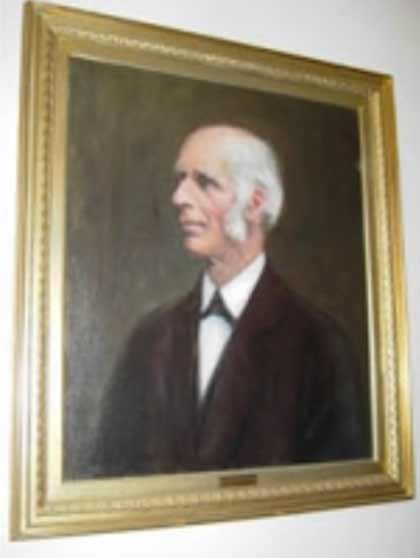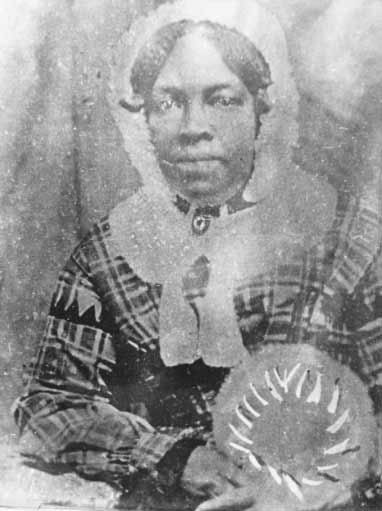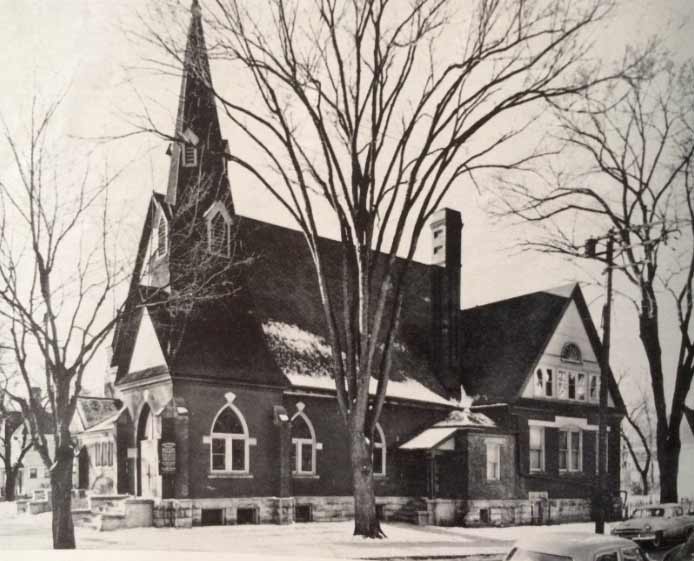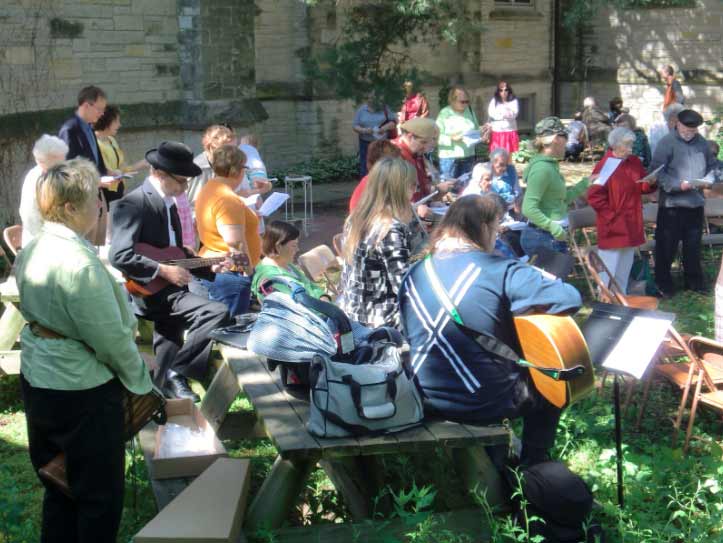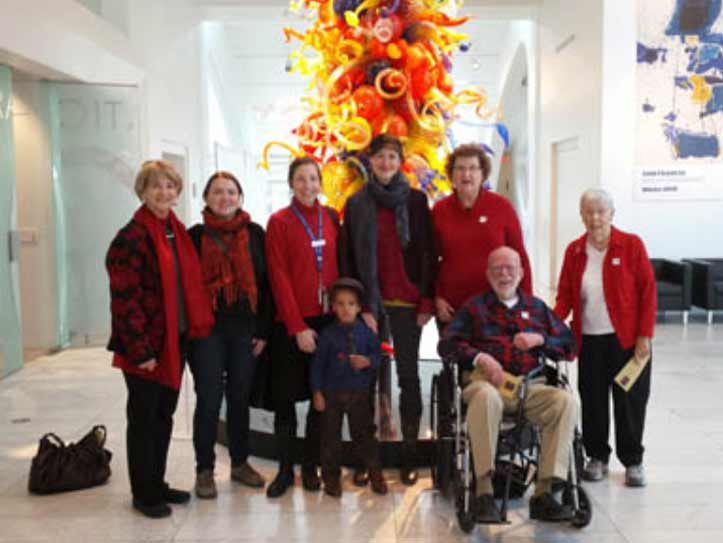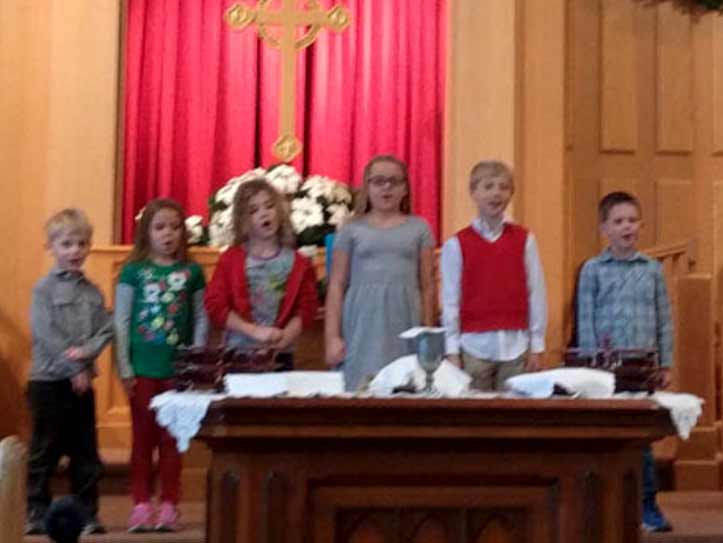Underwood Memorial Baptist Church
Our History
Want to Hear Our Story?
Click the audio players below to hear some stories and history about Underwood.
The History of Underwood
Member Kate Olsen's Testimony
History Timeline
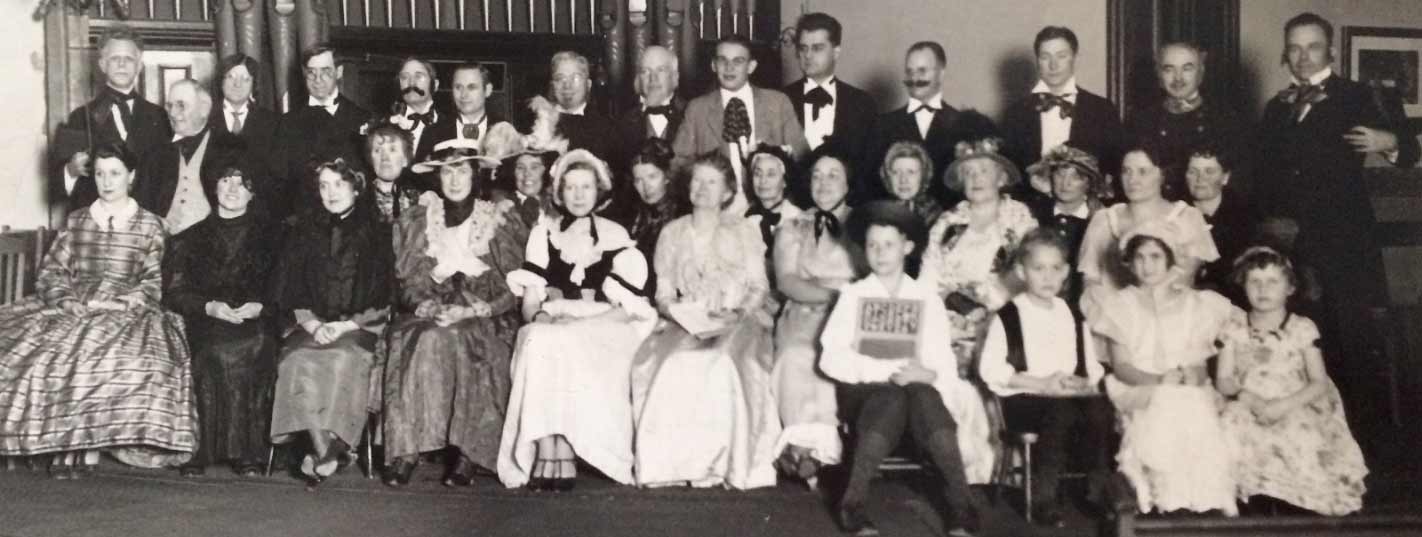
Our long history is made up of people who dared to challenge society by loving those whom society marginalized. People whose love for God was reflected in and strengthened by the bonds of their Underwood family. People who simultaneously had a strong sense of history and pride in their past but were also willing to break from the past when God guided them in new directions. Perhaps most accurately, our long history is made up of people who were the perfect balance of progressive and practical. Then as now, Underwood members were a bunch of starry-eyed dreamers willing to roll up their sleeves and harvest reality from their dreams.
On October 11, 1845, thirty-one charter members started what is now Underwood Memorial Baptist Church. White settlers had only been in the area for ten years and it would be another four years until Wisconsin became a state.
The charter members were all white farmers in the Wisconsin Territory, which was an important stop on the Underground Railroad as slaves made their way to Canada. Prior to establishing their own church, members had attended Greenfield Baptist Church in neighboring West Allis, but separated from that church over the question of slavery (progressive) and because it was kind of far away (practical).
The Greenfield Baptists believed in upholding the law regarding slavery while the charter members believed in the core Baptist value of personal freedom. The charter members may have seemed radical to their Greenfield counterparts, but they were actually following the lead of Baptist forefather Roger Williams. Williams had founded the First Baptist Church in America two hundred years earlier (in 1638) and was arguably the first abolitionist in North America. Williams was also a proponent of separation of church and state, as were his Revolutionary War-era Baptist successors who ensured this separation in our Constitution. This separation of church and state further validated the charter members’ position against the then-legal institution of slavery.
One of the first acts by the new church was to deny membership to anyone owning slaves or supporting slavery. For many years church members worked to elect anti-slavery candidates to public office, helped fund the abolitionist newspaper The American Freeman, and gave refuge to fugitive slaves as part of the Underground Railroad.
In 1849, one year after Wisconsin became a state, the church ordained its first pastor: Enoch Underwood. The fledgling church had spent several years seeking a pastor before Enoch, one of its charter members, was called from plow to pulpit. Enoch was an uneducated farmer and accepted the position on a temporary basis, believing the church could and would find a more qualified pastor. But none proved more qualified for laying the foundation of this church than Enoch Underwood, and he went on to serve as pastor for thirty-eight years.
Enoch was the leader of the Underground Railroad in what is now Wauwatosa. He and his wife Harriet sheltered several individuals seeking freedom in Canada. Harriet’s family had successfully helped conduct the first person along the Underground Railroad in southeastern Wisconsin. Her name was Caroline Quarles, and 150 years later, descendants of Quarles and the Underwoods would be reunited by Underwood church members in honor of the church’s 150th anniversary.
The young church struggled financially in its early years as the settlers struggled to make a profit in their new home. Enoch’s salary was the equivalent of $17,000 today, and members subsidized his pay with crops and other farm goods. Enoch continued to farm his own land for additional income and oftentimes gave more money to mission work than he earned from his pastor’s salary.
In 1853 the church built its first building, which was the first church building of any denomination in Wauwatosa. It once stood where the Wauwatosa Public Library now is, and was later moved across the street to the cemetery where it stands today.
On December 2, 1859, the church tolled its bell for one hour to mark the execution of John Brown. Brown led the Harpers Ferry rebellion, raiding an armory with the intention of arming slaves to fight for their liberation. The Harpers Ferry rebellion escalated tensions between the North and South, which led to the South’s secession and the Civil War. When civil war broke out, several church members joined the Union to abolish slavery once and for all.
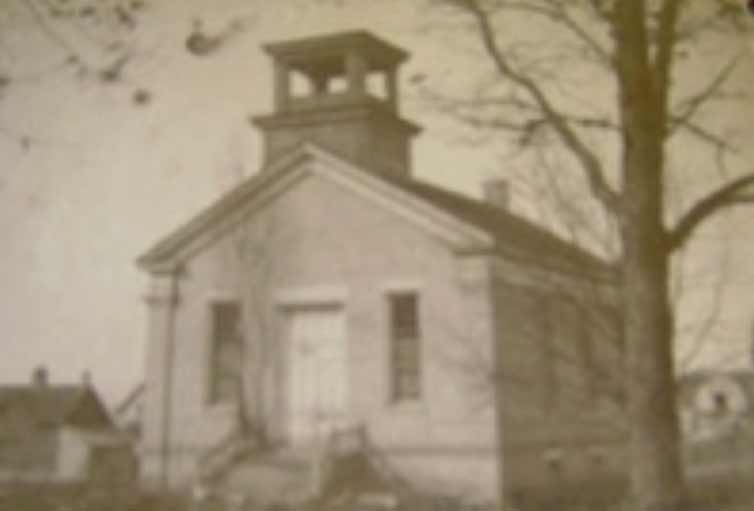
The Civil War brought prosperity and population growth to Milwaukee, and Wauwatosa began to shift from a farming community to a suburb as Milwaukee businessmen built homes away from the hustle and bustle of their places of work. While some church members bemoaned the changing landscape and left for greener pastures, the church itself benefited from a boost in membership. For over one hundred years, church membership grew with Wauwatosa, which became a city in 1897.
In 1888, the church built a much larger and more modern building nearer the village center. Construction on the new building finished in time for the church’s anniversary, but Enoch died just months before its completion. Twenty years later, his son Frederick Douglass Underwood, then a wealthy railway president, gave the church a hefty sum of money for renovations, a new organ, and a new bell. Per his request, the church adopted the name of Underwood in honor of his father and we remain Underwood Memorial Baptist Church to this day.
At the turn of the century, members of Underwood took to the social activism and reforms of the Progressive Era with gusto. Perhaps this is not surprising given that Progressivism was both progressive and practical. Underwood members advanced the cause of Prohibition, which was in keeping with one of the three founding resolutions of the church: the denouncement of alcohol (the other two denounced slavery and secret societies). Into the Roaring Twenties and Great Depression, Underwood offered a rich social alternative to drinking (complete with elaborate musicals) and a community ever ready to lend a hand.
During the Progressive Era, Underwood members also advanced the cause of education under the auspices of Sunday school. They established and ran several successful Sunday schools in the area, exposing some to classroom teaching for the first time and expanding the knowledge and scholarship of countless others.
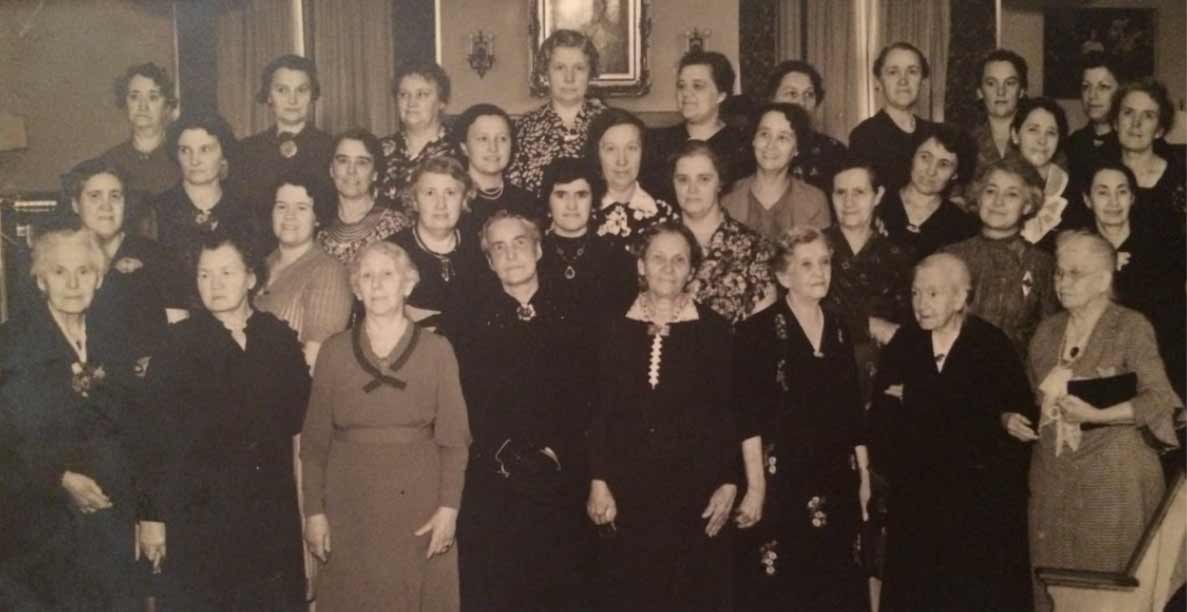
Perhaps the most important cause advanced by Underwood members at this time was that of women. During the Progressive Era, the women of Underwood organized and took to the public sphere like never before. They had what they called “Experience Dollar” meetings where each woman was expected to donate a dollar that she had earned of her accord. The experience dollars went to the Women’s Mission Society, which became one of the first missionary departments in the state and had a vibrant program that expanded to include men and children. An offshoot of the Women’s Mission Society was the Ladies’ Aid. Initially the Ladies’ Aid pieced quilts, sent clothing to missionaries, and cared for immigrant children. However, during the Progressive Era the Ladies’ Aid became a hotbed of leadership development and women began filling positions at Underwood and beyond.
The Progressive Era largely came to an end with the Great War, or World War I. Fifteen members of Underwood fought in WWI and all returned home safely. Our church would not be so lucky with World War II. When the United States entered the war, Underwood saw eighty-five of its men and women enlist in the armed forces. Four men did not return home. One of these men was twenty-two year old Robert Sheldon. Lt. Sheldon participated in bombing raids over Germany and died when his bomber was shot down by enemy fire over Holland. In honor of their son, Lt. Sheldon’s parents gave the sanctuary pulpit, podium, and communion table still in use today.
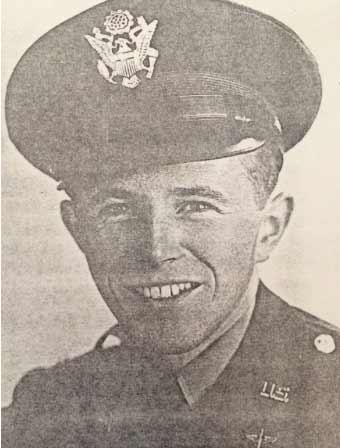
During WWII, in October 1942, Underwood participated in the observance of World Wide Communion Sunday, an endeavor that united denominations in an effort to “hold the world together.” Underwood members all across the world and here at home joined in taking communion that day. That sense of global connection from our first World Wide Communion Sunday had a profound impact on our church that carries over to this day.
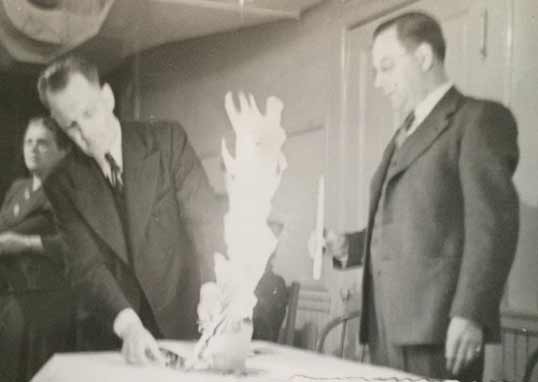
During the war, service members remained connected to their Underwood family in other ways as well. They would publish letters and updates in Tidings, our monthly newsletter which began in 1941, and receive letters in return. When Underwood burned its mortgage in May 1943, each service member received a small scrap of the mortgage. The mortgage was the result of a loan taken out shortly after the Great Depression struck when the church building was in need of repairs. Underwood members took great pride in repaying the mortgage two years ahead of schedule.
Members were also proud to hire their first woman as an associate pastor. In June 1944, Ruth Powers became the Director of Religious Education. Hiring Ms. Powers was both a continuation of and a watershed in our church’s ongoing progressive work toward gender equity. Over the years we hired several other women as associate ministers. And since 2002 the pastors of our church have all been women.
Despite the history of our church’s founding, in the years following WWII church members found racial equity more challenging than gender equity. One Sunday some members walked out of service because the man who gave the sermon – the pastor’s friend from seminary – was African-American. Others left the church altogether as Underwood became increasingly involved in the struggle for racial equality.
Underwood membership did not suffer when these members left. On the contrary, membership soared at “the friendly Baptist church,” which was the moniker by which we were known. In the years immediately after World War II, the economy was booming, babies were booming, and church membership was booming.
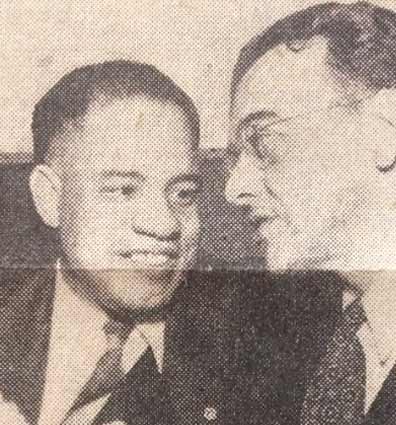
What set Underwood apart from other churches of the time was its “open door” policy of accepting all people and any religious beliefs they might hold – a policy that was progressive in nature and had practical results. Underwood’s membership doubled in size to over six hundred.
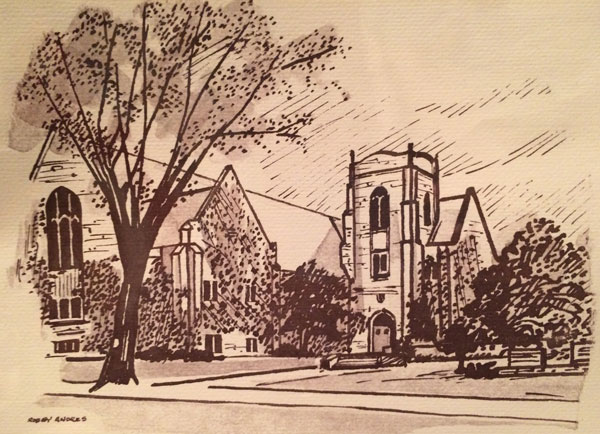
Church leaders successfully made the case for a new building, which now serves as Underwood’s home. The church was built for $375,000, which is the equivalent of over $3.3 million today, and was nearly paid in full by members’ pledges and their fundraising activities. Many members essentially doubled the amount of money that they gave to church, each year for three years, in order to leave us with this beautiful building.
The land and Stable House (or “the barn,” as it used to be known) were donated. They once belonged to the Cushings, who were some of Underwood’s first members, and were donated to the church by the Cushings’ children. The exact placement of the church building was determined by the location of the oriental pine tree in our courtyard, which was long a cherished Wauwatosan landmark and is now 120 years old.

Ground was broken on May 9, 1953, the cornerstone was dedicated on October 11, 1953 (our anniversary), and Dedication Week occurred September 12-19, 1954. Dedication Week included a service for the building’s workmen and a dedication message given by the president of the American Baptist Convention, who also happened to be an outspoken integrationist.
The building’s many fascinating details include the shield over our red (main) doors, the light fixtures in the sanctuary, and the stained glass window behind the chancel.
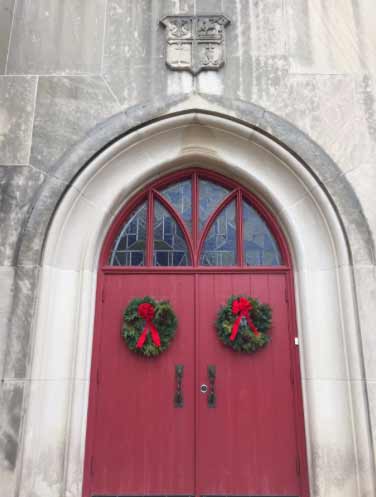
The red doors at our main entrance mark our church as a place of safety and refuge. It is red like the blood of Christ, and one passes through it into the presence of the Holy Spirit. The shield above the door was meant to symbolize the basic tenets of Underwood’s faith. The first quarter has a fleur-de-lys, which, as a conventionalized lily, represents the human nature of our Savior. The second is Jesus Christ, Lamb of God. The third is an open Bible with the cross-hilted sword of the Spirit behind it. And the fourth is a cross, chalice, and anchor representing Faith, Hope, and Charity.
The copper light fixtures in the nave were designed and made by Underwood member Wesley Gadbaw. Wes was an industrial arts teacher at Hawthorne Junior High. When he heard the estimates given for light fixtures, Wes was appalled and volunteered to do them himself.
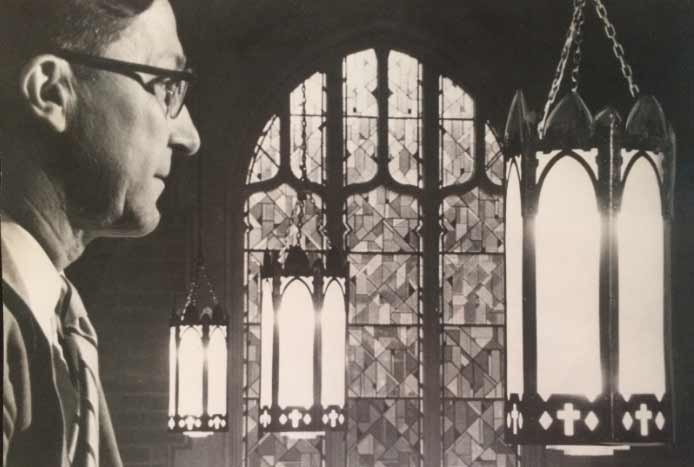
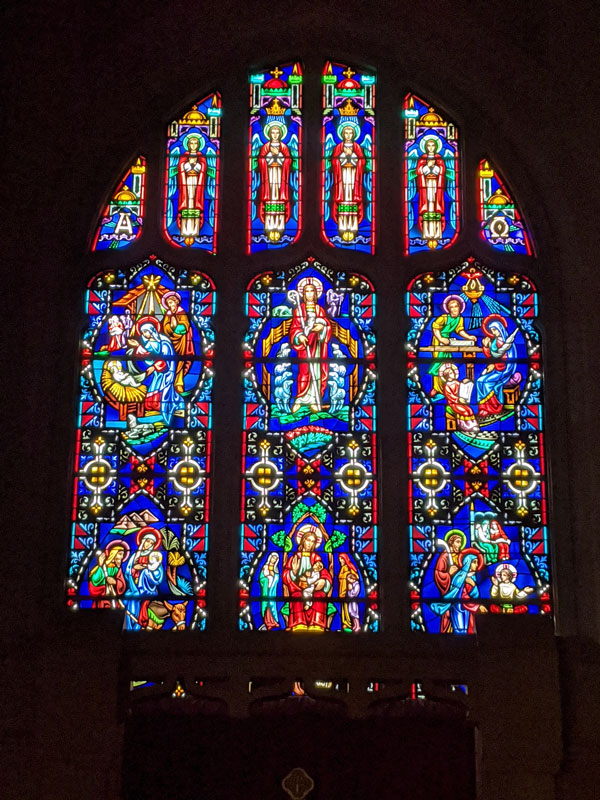
The stained glass window behind the sanctuary replaced the original window in 1957. It was donated by Earl and Margaret Franks in honor of their beloved daughter Karen. Karen was an only child and died tragically, at the age of 14, in a plane crash. The window depicts Jesus’s growth through childhood and youth, and on the bottom in the middle, where Jesus is shown welcoming the children, a likeness of Karen appears at his feet.
As the church settled into our new home, we turned our focus to helping others feel at home, whether at Underwood, in the Milwaukee area, or in the United States.
For almost twenty years, Underwood hosted an annual Foreign Student Day. All foreign exchange students attending college in the Milwaukee area were invited, and dozens of students from around the world would attend. The day included singing, discussions, lunch at the homes of members and/or dinner at the church, and lots of camaraderie. Underwood strove to make these foreigners feel at home when they were miles away from their own. A generation later we extended this same sense of hospitality to political refugees, helping individuals and families start a new life in the United States.
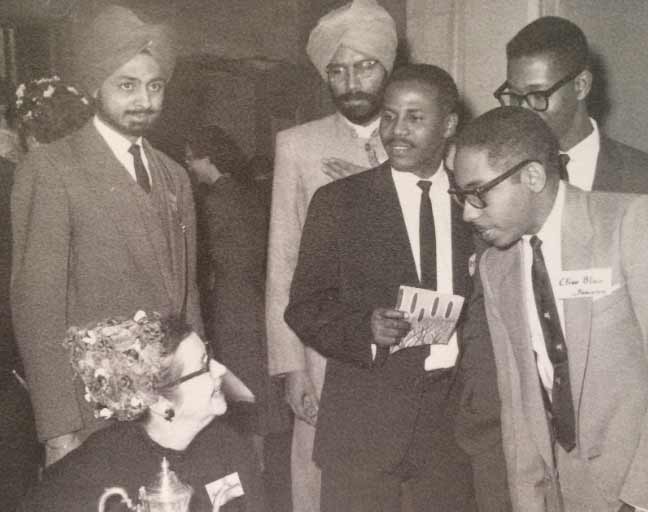
Underwood also strove to make African-Americans feel at home in their own city. In the late 1960s, Underwood members and ministers participated in Milwaukee’s open-housing marches. For two hundred consecutive days, African-Americans and their allies marched against housing discrimination based upon race. A wonderful side effect of the marches was the forging of lasting relationships. In the late 1960s Underwood and (the inner city) Mt. Moriah Baptist Church held a joint vacation Bible school. Twenty years later, the two churches began holding interracial worship services and alternated hosting the services. These services were well attended and highly effective at overcoming racial divides.
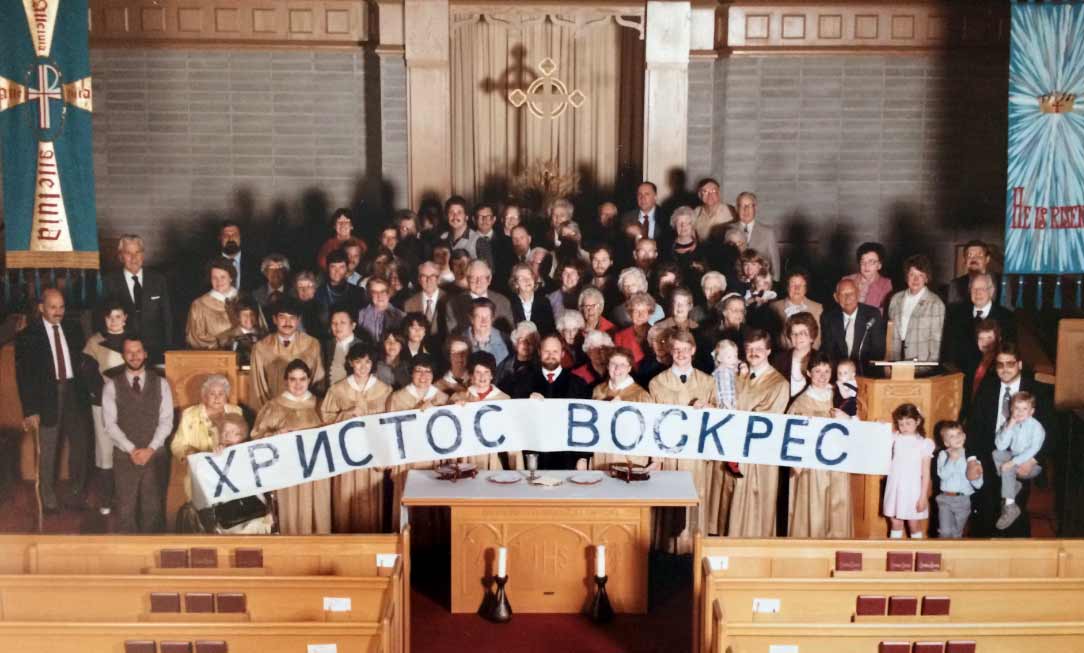
In the 1980s, Underwood was also active in overcoming geographical and political divides. We did our part to thaw Cold War hostilities by sending our pastor to the Soviet Union several times, becoming sister churches with a church in East Germany, and starting a chapter of the Baptist Peace Fellowship. Our efforts were driven by our centuries-old commitment to personal freedom, our belief in the inherent worth of each individual, and our knowing that we are all one.
With the new millennium came the opportunity for us to demonstrate this same commitment to personal freedom, belief in individuals’ worth, and knowledge of our Oneness. We did so by becoming welcoming and affirming of all people regardless of gender identity and sexual orientation. When we lovingly invited LGBT people to join us as they are, we broke away from other Baptist churches just as our founders had over slavery. We lost some members just as we had in the late 1940s when we positioned ourselves at the forefront of the fight for equality for African-Americans. But we’ve also gained so much more.
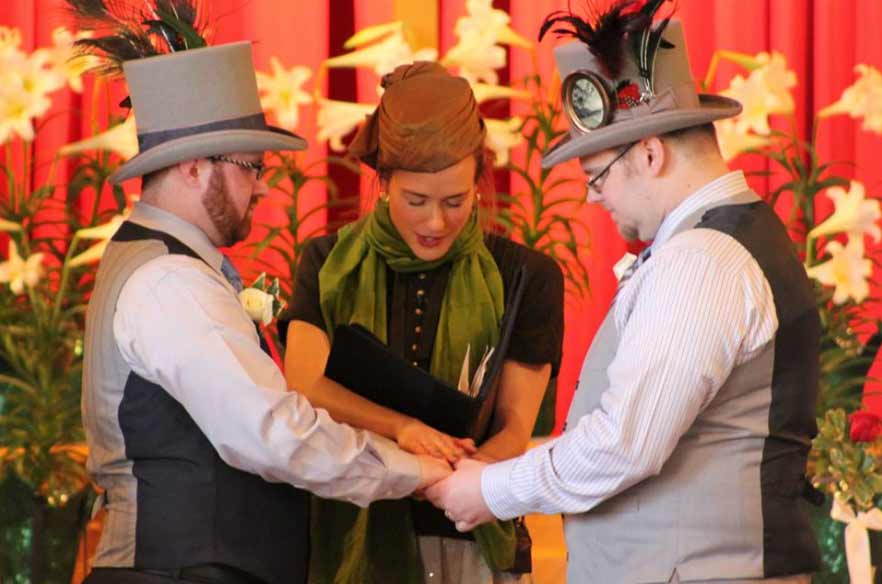
What our church believes and does are manifestations of who God is and what God means to us. We love our church and our fellow humans, and that love has continuously placed us on the right side of history. We continue to break from the past as God guides us in new directions, just as we have since 1845. And we, progressive and practical starry-eyed dreamers, have every intention of rolling up our sleeves and harvesting reality from our dreams for centuries to come.

